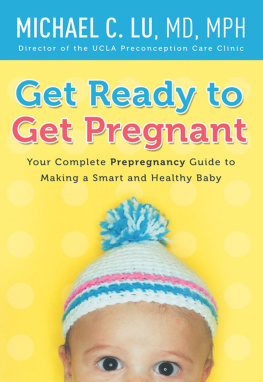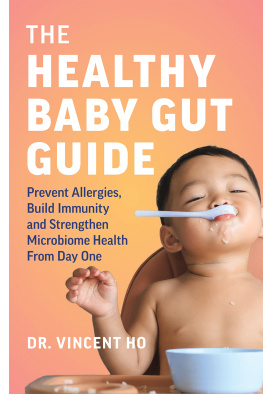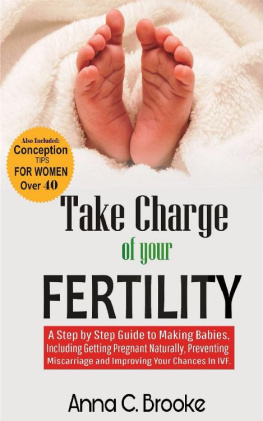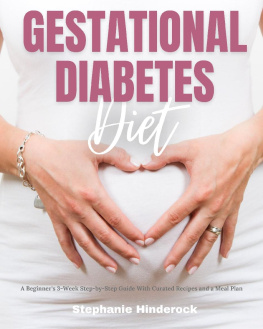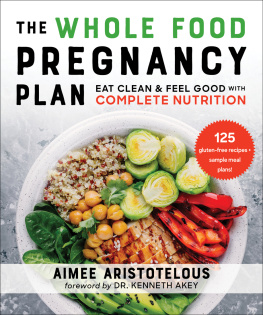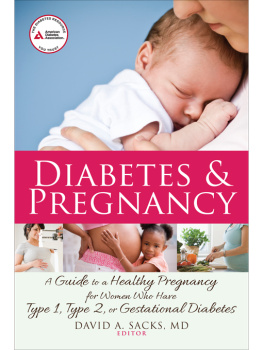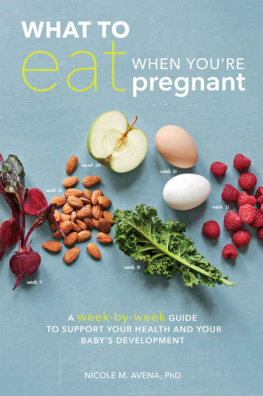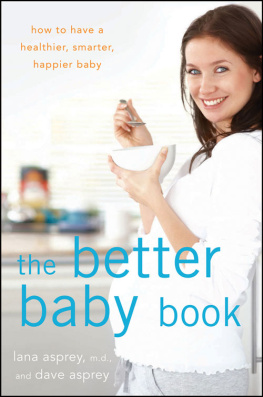Michael C. Lu, MD, MPH
Angie and her husband came to see me last year for a prepregnancy consultation.
We want to have another baby.
Planning a baby is an exciting time, but for Angie and her husband their excitement was tempered by some trepidation. Their two previous pregnancies were ended three months early by severe preeclampsia, a condition in which moms blood pressure goes up so high that it can jeopardize the health and even the lives of mother and baby. Angie and her husband were afraid (for good reason) that she might get preeclampsia again in her next pregnancy. They wanted to know what they could do to prevent a repeat.
These days my appointment book is filled with patients who want me to help them get ready to get pregnant. Some are high-powered professionals whove deferred childbearing until their careers are established, and now want to make sure that they are doing everything right before they conceive. Others are infertile couples who want to make sure all systems are checked out and ready to go before they undergo fertility treatment. Still others are patients with chronic medical conditions like epilepsy or rheumatoid arthritis who want to make sure that the medications they are taking are safe for pregnancy. But many are simply healthy women who want a head start on making a smart and healthy baby.
And then there are patients like Angie whove had a problem pregnancy in the pastwho have dealt with problems such as preeclampsia, preterm birth, stillbirth, and birth defectsand are at risk for recurrence of the same problem in their next pregnancy. Given Angies history, there was a good chance that she would get preeclampsia again in her next pregnancy.
To prevent this from happening, I had to find and treat the underlying problem before she got pregnant again. This required some detective work. I reviewed her old records, performed a thorough history and physical exam, and ordered a bunch of laboratory tests including genetic analyses, searching for clues as to what might have happened in Angies two previous pregnancies. But, alas, nothing turned up as suspect.
Then I did an endometrial biopsy to examine the linings inside the uterus. I did this based on my knowledge of the pathogenesis of preeclampsia. Preeclampsia is a disease of the placenta. One of the most consistent pathological features of preeclampsia is poor, shallow implantation; something went awry in early pregnancy so that the placenta was never able to implant properly inside the uterus. This poor, shallow implantation sets up the pathogenic processes that eventually lead to preeclampsia later in pregnancy. By looking at the linings inside the uterus, I was hoping to find anything that might interfere with proper implantation.
The endometrial biopsy came back with evidence of chronic inflammation. Eureka! This was the clue I was looking for! As one could imagine, had Angie gotten pregnant again the placenta wouldve had to implant into a womb that was chronically inflamed. Chronic inflammation could have interfered with proper implantation, and Angie might have ended up with severe preeclampsia a third time.
So I had to put out the fire inside Angies womb before she got pregnant again. First I looked for any chronic infection that, if left untreated, could become a source for chronic inflammation. I found none. Then I put Angie on a special anti-inflammatory diet rich in omega3 fatty acids and antioxidants, and got rid of a lot of pro-inflammatory foods from her diet. Knowing that chronic stress can cause chronic inflammation, I also put Angie on a stress-reduction plan, which included daily exercise and meditation. I showed Angie how to detoxify her home room by room, and get rid of any potential triggers of chronic inflammation, including some personal care and household products that she was using. Lastly, I put Angie on baby aspirin, which has anti-inflammatory properties, once a day for three months. I gave Angie an early draft of this book, which she and her husband read cover to cover and followed as their Bible.
Angie came back to see me three months later, and I repeated the endometrial biopsy. The biopsy came back negative; the chronic inflammation was gone! I gave her the green light to get pregnant, which she did within the next month.
I watched Angies pregnancy with great care, closely monitoring her blood pressure and placental functions. Twenty-eight weeks (which was when Angies previous pregnancies had ended in severe preeclampsia) came and went, and there were still no signs of preeclampsia.
Angie went on to deliver a normal, healthy baby at full term. Today her third baby is completely healthy, all because she did her homework before pregnancy.
Angies story reveals two secrets Ive learned over the years about making a smart and healthy baby. The first is timing is everything. Had Angie waited to see me until after she got pregnant, it wouldve been too late. This is because implantation begins very early in pregnancy, at seven days after conception. Seven days is before any home pregnancy test would turn positive, and long before most women start prenatal care. So had Angie shown up for early prenatal care, it still wouldve been too late for me to turn back the clock on implantation and stop the inexorable march toward preeclampsia.
The second secret of success that Ive learned over the years is preparation is key. Angie had a healthy baby because she did her homework before pregnancy. When it comes to making a smart and healthy baby, getting ready before pregnancy is the first and perhaps most important step. But the question is how ? This is why I wrote this bookto show prospective parents how to get ready for a pregnancy. This book is filled with information that prospective parents need to know before making a baby, such as how to get themselves nutritionally prepared for pregnancy, or, as Angie did, how to give their immune system a good tune-up before pregnancy.
why you should read this book
before you get pregnant
If you are curious enough to open up this book, chances are the thought of having a baby has crossed your mind at least once or twice already. You might be actively trying to get pregnant. Or you might be waiting a year or two. Whatever you are thinking, I would like to invite you to read this book, cover to cover, BEFORE you get pregnant.
Even if you are planning to wait before having a baby.
This is because what you do or dont do right now can have consequences (good or bad) for your future pregnancy, even a year or two from now. Let me give you an example.
Ever heard of something called dioxins ?
If you havent, you should. Dioxins are toxic chemicals that pollute our environment. They may be harmful to the fetal brain. They can also disrupt normal development of the fetal endocrine and immune systems, similar to other so-called endocrine disruptors like diethylstilbestrol (DES) or polychlorinated biphenyls (PCB). But unlike DES and PCB, which are banned in the United States, dioxins are produced in large quantities in paper mills, pesticide manufacturers, incinerators, and other sources of combustion all across the United States. They pollute our environment and contaminate our food supply; more than 90 percent of human exposure to dioxins currently is through the food supply. Dioxins are very lipophilic, which means they like fatthey are stored in animal fat. We accumulate dioxins in our body by consuming animal fat. The more animal fat we eat, the more dioxins we accumulate. And the prevailing practice of feeding animal fat to animals to fatten them up further raises the dioxin content of the meat and dairy we consume.

